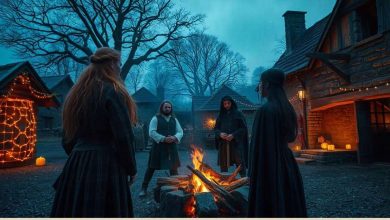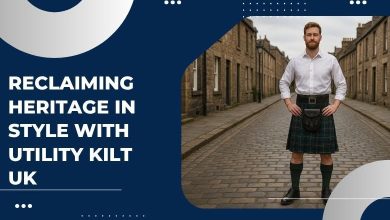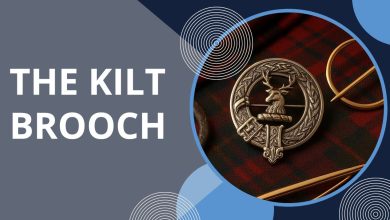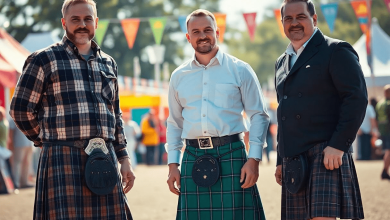Scottish Tattoos Inspired by National Symbols: Ideas and Meaning
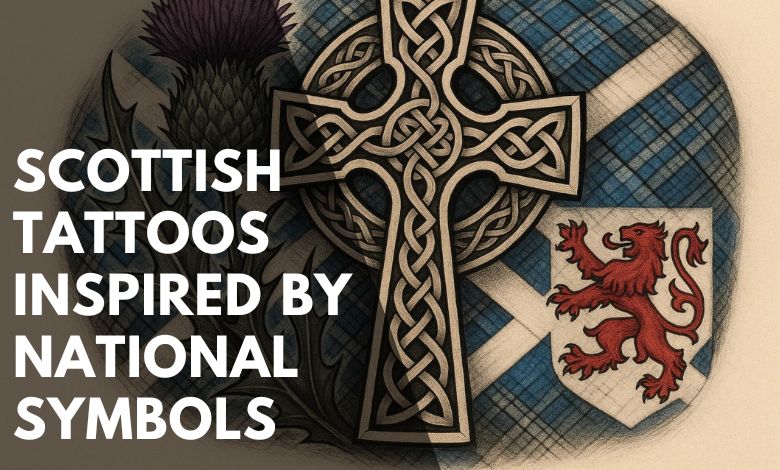
Scots have many ways to show pride in their cultural heritage, like wearing their traditional kilt outfits, participating in traditional festivals, and more. Another common practice there is to make tattoos on different body parts. Some may get tattoos as a part of the fashion statement, while the majority consider it a way to admire the culture. People usually get different types of designed marks, such as Celtic designs and cultural signs, including Celtic crosses, thistles, tartan patterns, and more. This article seeks to explain some Scottish tattoos inspired by Scottish symbols and the meaning behind them. So, let’s begin our discussion.
Table of Contents
ToggleThe Meaning Behind Scottish National Symbols
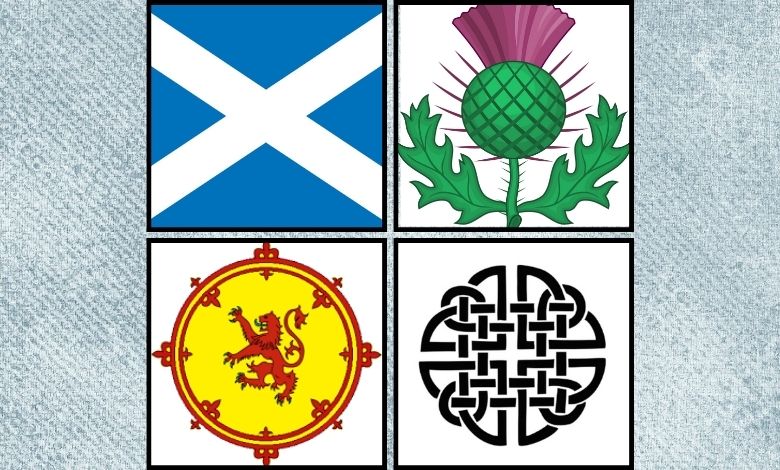
Tattoos were invented almost 12,000 years ago, and Scotland adopted this trend approximately 20 centuries ago. The Vikings were among the first to introduce tattooing into Scottish culture. Tattooing became especially popular during the 18th and 19th centuries among sailors and residents of port towns like Edinburgh. A majority of Scots now have tattoos that are hugely inspired by Scottish symbols. Before diving into the new ideas of making these marks, let’s discuss the meaning behind these symbols.
The Thistle
The concept of making thistles as tattoos is a very notable practice there. This particular mark helps them to show pride in their heritage by designing the national plant.
The Saltire (St. Andrew’s Cross)
A majority draw a saltire, or the national flag of Scotland, on their arms to prove their love for the country. They usually ask tattoo makers to draw the St. Andrew’s Cross, which also adds a flair of religious admiration.
The Lion Rampant
If you are a Scot or have ever been to Scotland, you may have seen people designing a lion on their arms or necks. The lion stands on its hind legs and is ready to attack. This lion is called the Lion Rampant, which is usually seen on the non-official flag of Scotland.
Celtic Knots & Patterns
These tattoos began influencing Scottish culture in Celtic Era and they are common to spot in the entire Highland region. Ancient Celts, which usually have intricate knotwork and animal forms, are basic inspiration for such marks. Some notable examples are the Celtic Cross, Celtic trees, and other intricate designs aiming to admire the influence of Celts on Scottish communities.
Clans and Tartans
Perhaps one of the easiest ways to identify Scottish ancestry is through tartan designs. The distinctive tartan of each Scottish clan is frequently worn as scarves or kilts. One may pay a very personal homage to his heritage and family roots by getting these tartans tattooed.
The Highland Stag
In Scottish tattoo culture, the Highland stag is another common image. To many, stags are the symbol of Scotland’s wild and honourable nature. Such tattoos are usually made alone, while sometimes in combination with Celtic knots or a landscape to enhance their depth.
Bagpipes & Scottish Instruments
Of all the Scottish instruments, bagpipes are probably the most recognizable, and music is central to Scottish culture. Tattoos featuring bagpipes and other musical instruments are usually an essential part of Scottish festivals, music, and even departed family members. For both performers and fans, this tattoo represents tradition, passion, and remembrance.
Tattoo Design Ideas Inspired by Scottish Heritage
Design options are virtually limitless when transforming ancestry into body art. Scottish-inspired tattoos can range from the subtlety of whispered legends to the boldness of Highland symbolism. Wearing your heritage with pride is possible by selecting the ideal design, regardless of your preference for simple or profound significance.
Minimalist vs. Detailed Realism
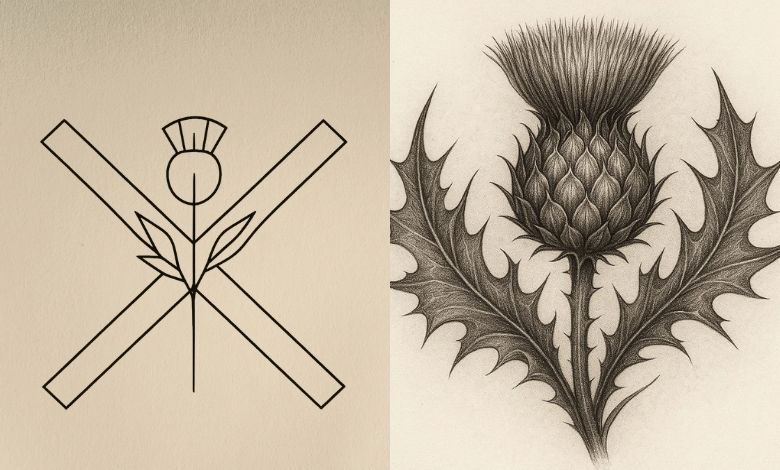
Planning a Scottish tattoo requires consideration of your artistic approach. Simple saltires or delicate thistles are examples of minimalist designs that respect heritage while providing a sleek, contemporary appearance. The historical depth that original realism offers, however, makes it perfect for elaborate landscapes, stages, and portraits. Choose a style that speaks to your identity because each one tells a unique narrative.
Incorporating Tartan Patterns or Clan Crests
Personal symbols of kinship are clan crests and tartan tattoos. Each tattoo has a classical, historical, thread-like quality because of complex lines resembling woven cloth. Clan crests in the form of painted visuals usually have family mottos or emblems and a source to pay honour to your family.
Blending Symbols
A potent homage is produced by fusing several Scottish emblems into a single design. A thistle blending with the Saltire for instance, admires the Scottish people’s tenacity and sense of pride. To give depth and complexity, combine Celtic knots with a Highland stag or the Lion Rampant. These hybrid tattoo designs combine strength, religion, and ancestry to create a cohesive piece that tells more complex tales.
Sleeve, Forearm, and Shoulder Placement Ideas
The spot of your tattoo has a big impact on how people perceive it. Sleeves are often ideal for detailed logos and for complex designs featuring landscapes, stags, and ancient symbols. Simpler crests or crosses on the forearms provide visibility and stuns the visuals. Likewise, clan insignia or circular Celtic motifs look great on shoulders.
Watercolour and Celtic Line Art Aesthetics
For those seeking a more creative touch, prominent Scottish symbols such as the Saltire or a Highland setting might be given a gentle, flowing effect by using watercolour techniques. Conversely, line art in Celtic festivals symbolizes perpetual life and connection using powerful black ink with countless loops and knots.
How Kilts and Tattoos Celebrate Scottish Identity
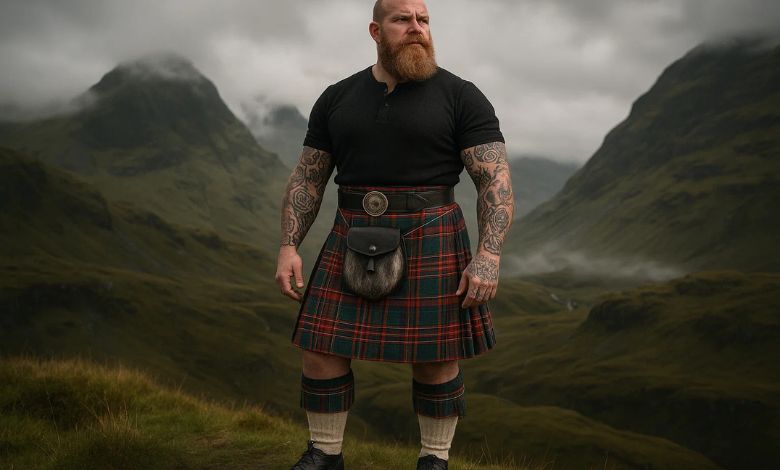
This query about kilts and tattoos celebrating Scottish identity often knocks the thoughts of many people. In fact, it is true that tartan kilts and tattoos are the most prominent parts of Scottish identity. Men’s kilts, especially tartan kilts, are the representatives of Scottish clans and very common to spot on formal occasions. Tattoos, on the other hand, are usually inspired by the cultures that significantly influenced the Scottish traditions.
Moreover, an important consideration is to get a neat and clean tattoo. Similarly, relevant and kilts with accurate patterns are important to maintain their respect. Studio XIII and Red Hot Blue Tattoo are strong suggestions to get tattoos. Similarly, ensure you choose a trustworthy brand such as Utility Kilt UK to buy kilts.
Tips Before Getting a Scottish-Inspired Tattoo
All tattoo makers are not competent enough to make designs that truly represent the cultural identity. Likewise, a random mark might not be sufficient to honour your tradition. So, you must be conscious about many aspects to get the most relevant mark.
- First of all, you must research thoroughly to decide what you will engrave on your body. Choose the clan crest or tartan patterns carefully.
- Do not approach a random artist, but choose a person with sufficient experience to make a tattoo.
- Another aspect is to make sure of the purpose of making a tattoo. If you are a culture enthusiast, choose a traditional design. Otherwise, a mark with modern aesthetics would be a positive gesture.
- As mentioned above, the spot to get a tattoo matters. So, get a mark on a part that usually is visible to admire your identity.
FAQs About Scottish Tattoos
Can I get a Scottish tattoo even if I don’t have Scottish heritage?
Yes, not only you; in fact, everyone can get a Scottish tattoo regardless of his ancestry.
What are some lesser popular Scottish symbols in tattoos?
Even though there are thousands of tattoos that people usually get on different parts of their bodies. However, some less popular of them are less popular including Ailm, Solomon’s Knot, Serch Bythol, Kelpie, and Merrow.
Is it disrespectful to get a clan tattoo without being part of that clan?
As you can wear another clan’s tartan, the same is the criterion with tattoos. It is not disrespectful to get another’s clan’s tattoo, but ensure getting the accurate one with no flaws in it.
Are Gaelic words or phrases commonly used in Scottish tattoos?
Yes, people still follow Gaelic phrases in Ireland and Scotland and use specific words related to this culture on their body parts. However, every word Scots get as a tattoo delivers a prominent message. Some popular words are “grá” (love), “saol” (life), “siochain” (peace), “dúchas” (heritage), and “misneach” (courage).
Are there specific Scottish festivals or traditions that inspire tattoo art?
Interestingly, Scotland is a country where cultural traditions are deeply valued and celebrated. The same is true for making tattoos, where some festivals, such as The Royal Edinburgh Military Tattoo and Highland Games, are specific to prompt the culture of tattoos.
